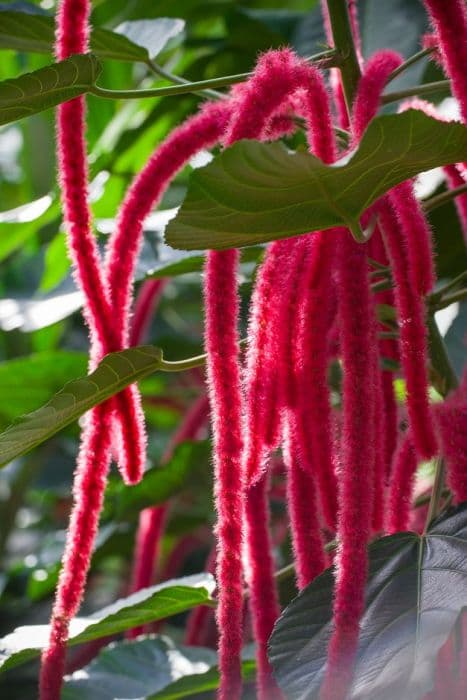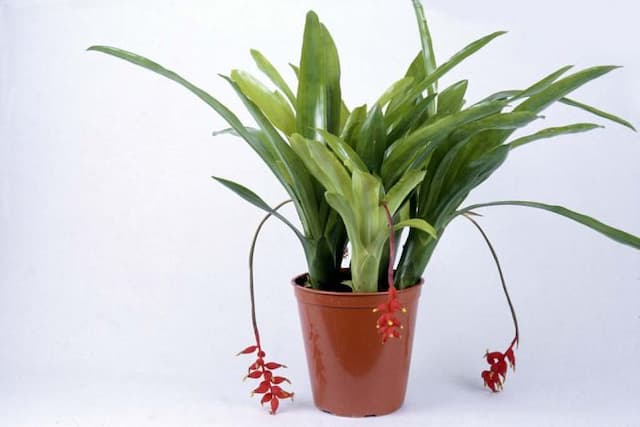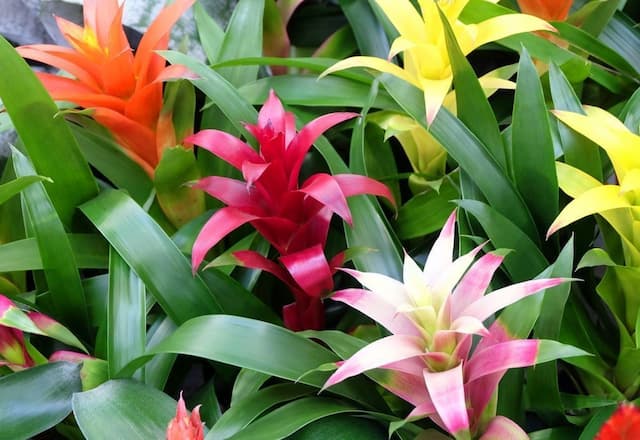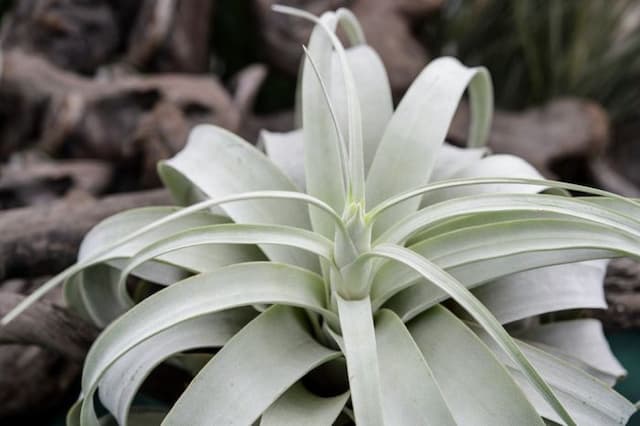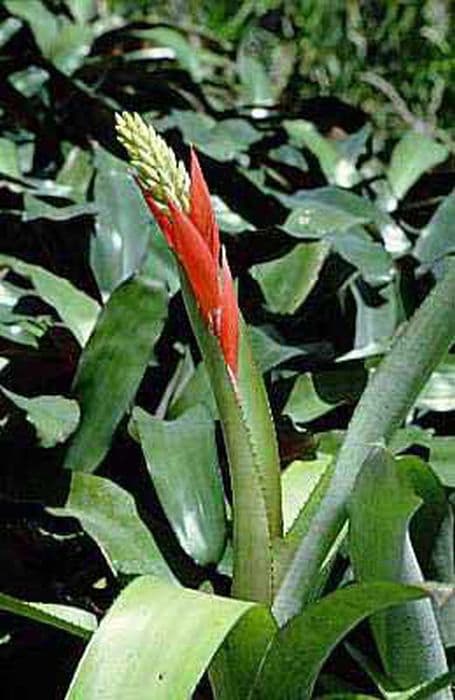Cotton Candy Air Plant Tillandsia 'Cotton Candy'

ABOUT
Tillandsia 'Cotton Candy' is a delightful air plant known for its radiant and fluffy appearance, much like the sweet treat it is named after. The plant boasts a mesmerizing swirl of narrow leaves that are soft and supple to the touch. These leaves can display a range of colors from green to a silvery-pink hue, especially as the plant gets ready to bloom. The color change signifies the onset of the bloom cycle, during which the plant showcases exotic and striking flowers. The blooms are typically vibrant pink or purple, adding a burst of color and contrast to the softer tones of the foliage. With its whimsical structure and captivating colors, the Cotton Candy air plant is a visual delight that resembles a miniature botanical spiral of sweetness, sans the stickiness of its namesake.
About this plant
 Names
NamesFamily
Bromeliaceae
Synonyms
Cotton Candy Tillandsia, Cotton Candy Air Plant
Common names
Tillandsia 'Cotton Candy'
 Toxicity
ToxicityTo humans
Tillandsia 'Cotton Candy', more commonly referred to as air plant, is generally considered non-toxic to humans. Ingesting parts of the plant should not cause poisoning or serious health issues. Nonetheless, caution is always advised as individual allergic reactions can occur.
To pets
Air plant is considered non-toxic to cats, dogs, and other household pets. Ingesting this plant should not cause poisoning, and your pets are unlikely to experience any severe symptoms if they consume parts of the air plant. However, it's always a good practice to keep an eye on your pets and prevent them from eating any plants, as individual cases might vary, and digestive upset could occur from eating non-food items.
 Characteristics
CharacteristicsLife cycle
Perennials
Foliage type
Evergreen
Color of leaves
Green
Flower color
Pink
Height
6-8 inches (15-20 cm)
Spread
6-8 inches (15-20 cm)
Plant type
Bromeliad
Hardiness zones
9
Native area
Central America South America
Benefits
 General Benefits
General Benefits- Easy to Care For: Cotton Candy air plants require minimal watering and no soil, making them very easy to maintain.
- Enhances Decor: Their unique appearance and delicate pink blooms can add an aesthetic touch to any interior design.
- Adaptability: They can thrive in a variety of environments, both indoors and outdoors in suitable climates.
- Space-Saving: Being small and soil-free, they are perfect for tight spaces where traditional potted plants might not be feasible.
- Pet-Friendly: They are non-toxic to cats and dogs, making them safe to keep around pets.
- Long Living: With proper care, these plants can live for several years, often blooming annually.
- Improves Mood: The presence of plants like Cotton Candy can enhance your mood and create a calming environment.
- Unique Gift Idea: Their distinctive look and ease of care make them excellent and unique gifts for plant enthusiasts.
- Propagating Potential: They can produce offsets, or "pups," which can be removed and grown into new plants.
- Minimalist Appeal: Their simple yet intriguing appearance caters to those with a minimalist aesthetic.
 Medical Properties
Medical PropertiesThis plant is not used for medical purposes.
 Air-purifying Qualities
Air-purifying QualitiesThis plant is not specifically known for air purifying qualities.
 Other Uses
Other Uses- Decorative Jewelry: Tillandsia 'Cotton Candy' can be incorporated into living jewelry pieces such as necklaces or earrings where it adds a unique, organic touch.
- Craft Projects: Glue small specimens to magnets to create decorative fridge magnets that bring a touch of nature to your kitchen.
- Wedding Bouquets: A non-traditional addition to wedding bouquets, Tillandsia can add an exotic look and an element of surprise.
- Table Centerpieces: Can be used in table centerpieces, either alone or as part of a composition, providing a lasting and striking feature for events.
- Gift Toppers: Instead of a traditional bow, tie a Tillandsia 'Cotton Candy' to the top of a gift for a green and eco-friendly decoration.
- Bookmark Decoration: Attach to a durable bookmark to provide a green and textured embellishment for book lovers.
- Car Mirror Charm: Hang a small Tillandsia from the rearview mirror as a car charm that thrives in the sun-filled environment.
- Fairy Gardens: Use Tillandsia 'Cotton Candy' to create a whimsical element in miniature fairy garden setups.
- Seasonal Ornaments: During holidays, use these plants to create unique, living ornaments for a Christmas tree or as part of a festive display.
- Sustainable Packaging: Incorporate Tillandsia into environmentally friendly packaging designs to add a living aspect to the presentation of a product.
Interesting Facts
 Feng Shui
Feng ShuiThe plant name Tillandsia, commonly known as air plant, can be used in Feng Shui to attract positive energy and enhance the flow of Chi, due to its uplifting and carefree nature. It is best placed in areas that benefit from increased air circulation and light, such as the east for health and family growth, or the south-east for wealth and abundance. However, it should not be placed in bedrooms, as the plants can create too much yang energy, leading to restlessness.
 Zodiac Sign Compitability
Zodiac Sign CompitabilityThe air plant is not used in astrology practice.
 Plant Symbolism
Plant Symbolism- Delicacy: The Tillandsia 'Cotton Candy', commonly known as just 'Cotton Candy,' has a delicate appearance akin to the airy and light confection it's named after, symbolizing finer and more exquisite aspects of life.
- Uniqueness: As an air plant, 'Cotton Candy' does not need soil to grow, which sets it apart from most other plants. This symbolizes individuality and the ability to thrive in unique environments or situations.
- Freedom: The ability of 'Cotton Candy' to grow without being rooted in the ground is symbolic of freedom and independence, as it is unbound by the constraints that limit other plants.
- Adaptability: 'Cotton Candy' is resilient and can adapt to various conditions, symbolizing adaptability and the ability to thrive in diverse situations.
- Beauty: With its blush of pink color and feathery texture, 'Cotton Candy' represents beauty and grace.
 Water
WaterAir plants like the Tillandsia 'Cotton Candy' should be watered by soaking in room temperature water for 20-30 minutes about once a week. Ensure the plant is upside down so excess water can run off and avoid rotting. After soaking, gently shake the plant to remove any trapped water within the leaves. Between soakings, misting with a spray bottle two to three times a week can provide additional hydration. The exact amount of water depends on the environment, but it's roughly the equivalent of 1-2 ounces per soaking for a medium-sized plant.
 Light
LightAir plants such as the Tillandsia 'Cotton Candy' need bright, indirect sunlight. They flourish under the coverage of a shaded area that receives plenty of light without being directly exposed to the sun. A north or east-facing window is ideal as it provides bright but filtered light without the harsh midday sun which can scorch the leaves.
 Temperature
TemperatureThe Tillandsia 'Cotton Candy' prefers temperatures between 50-90°F (10-32°C), with the ideal temperature range being around 70-80°F. They can survive temporary dips just below 50°F but should not be exposed to frost. Keep these air plants away from cold drafts and hot air vents to maintain stable temperature conditions.
 Pruning
PruningThe Tillandsia 'Cotton Candy' generally requires little pruning. Remove any brown or dead leaves by gently pulling them away from the base to maintain the plant's appearance and encourage healthy growth. The best time for pruning is after it has finished flowering, usually done on an as-needed basis, perhaps once or twice a year.
 Cleaning
CleaningAs needed
 Soil
SoilAir plants like Tillandsia 'Cotton Candy' do not require soil; they absorb moisture and nutrients through their leaves. A mounting surface or an airy, orchid bark-based mix can be used if desired for presentation. The soil pH isn't a concern for these soil-less plants, but they thrive in slightly acidic to neutral conditions if grown in a medium.
 Repotting
RepottingAir plants such as Tillandsia 'Cotton Candy' do not require traditional repotting. Instead, they may need to be remounted or moved to a larger display if they outgrow their current space.
 Humidity & Misting
Humidity & MistingTillandsia 'Cotton Candy' thrives in high humidity levels, typically between 50% to 70%.
 Suitable locations
Suitable locationsIndoor
Place in bright, indirect light and mist frequently.
Outdoor
Mount on bark or hang in partial shade; protect from frost.
Hardiness zone
9-11 USDA
 Life cycle
Life cycleThe life of Cotton Candy Air Plant (Tillandsia 'Cotton Candy') begins as a seed germinating on a host tree or structure, where it uses its trichomes to anchor and absorb moisture and nutrients from the air. It grows into a small rosette, gradually matures, and forms clusters through a process called pupping, where it produces offsets around the base of the parent plant. The plant reaches maturity in several years, at which point it blooms once in its lifetime, producing pink to lavender inflorescences that are feathery and light. After flowering, the plant invests energy into creating new pups, ensuring its legacy continues. The parent plant slowly starts to decline post-flowering, as its lifecycle concludes, allowing the pups to develop into mature plants. These new generation plants will repeat the cycle, continuing the species' life through the same stages.
 Propogation
PropogationPropogation time
Spring-Summer
Propogation: The most popular method of propagating a Tillandsia 'Cotton Candy', also known as an air plant, is through the division of offsets, commonly called "pups." These pups are miniature clones of the parent plant that form at its base after the parent has flowered. The best time to propagate is during the growing season, which is typically spring through mid-summer. Once a pup reaches about one-third the size of the parent plant, it can carefully be pulled apart from the main plant, using a gentle twisting motion. The separated pup should be allowed to dry for a day before being mounted or placed in its new location, where it can be misted or soaked like an adult plant for hydration. This method is simple and ensures that the offspring retain the characteristics of the parent plant, making it an effective and appealing choice for air plant enthusiasts.
